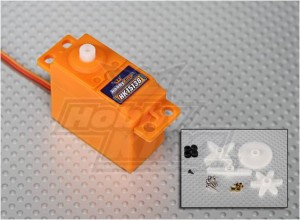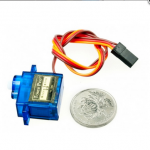Lithium-Polymer (LiPo) Batteries
- Lipo Battery Details
- Charging Lipo Batteries with the Hextronik HX8080 Charger
- The pack can deliver currents of 40 Amps and more. If shorted, they will explode.
- All battery packs are now equipped with inline fuses, normally rated at 10 Amps.


Old batteries – we used to use Nickel Metal Hydride battery packs, 14.4 V / 2700 mAh. Same current limiting fuse. You may see these batteres around in the lab.
Waterjet Cutter
- We have an OMAX Waterjet 2652 (2foot x 4foot workspace). Located in Hebb 48.
- OMAX Layout and Make software tools
- Layout and Make are installed on all computers in Hebb 42. Please use the software there to verify and prepare your drawings before heading to the OMAX machine.
- Fabrication costs us $1/min in costs.
Laser Cutter
- We have the Versa Laser VLS 4.60. 24″ x 18″ workspace, 60W CO2 laser. Located in the Fabratory (ChemPhys A040).
- Short video showing the machine in action
- list of materials that can be cut (plastics that do not contain chlorine, wood, paper, cardboard) (no metal)
3D Printers
- We have two Up! printers capable of printing in two types of plastics, ABS or PLA (purchased from the Hong-Kong and USA stores)
- Located in the Fabratory (ChemPhys A040) May be moved to Hebb 42 duirng the 253 course.
- Video of one of our printers in action. Printing a lead screw/nut combination
- Bare-Bones Guide to the UP! 3D printer
- A more complete guide to the printer
- Printing for small objects (~1 cubic inch) may take 1-2 hours, depending on complexity.
- Printing costs us $0.10 per gram.
Powder Coating
- We have a small powder-coating booth and oven (~2foot x 2foot x 2foot). Located across from the Student Machine Shop, Hennings 224.
- Video showing the powder coating setup
Other Hand Tools
- Soldering
- The basics rules of Soldering. A complete 6-min video.
- How todesolder using desoldering braid and using the desoldering vacuum tool
- We also have solder fume extraction fans, one per group – please make sure to use them!
- Knurling
- How to knurl the end of a meccano shaft
- Epoxy
SolidWorks
- SolidWorks is available for use in Hebb 42 for the duration of ENPH 253. You must log in to the VPN on these machines.
- There are many software tutorials for SolidWorks, including tutorial videos, which might be useful guidance.
- Interested in making gears and animating them? Check this out.
- Note that newer versions of Solidworks may be available, but the educational license acquired by the UBC department lags behind by several months (normally released in mid-summer). SolidWorks is notoriously difficult when it comes to backwards compatibility, so be aware of which version of the program you are using.
Stock Materials
- Chassis for robots are generally made from 24 gauge steel sheet metal. ( 24 gauge = 0.60mm = 0.0239” thickness)
- Different thicknesses are available but should not be used, if possible. Try to use structural features for stiffness instead.
- Different sheet metal materials: Only in special cases, aluminum and other materials are available.
- Delrin (a type of plastic) is available as sheet stock 1/4” (6.35mm) to make custom sleeve bearings – check out the sample at the front
- Steel rod 4mm is available to make custom length shafts (fits meccano size gears and adapters)
DC Motors
Geared Barber Coleman motor (FYQF 63310-9) (at 12V)
- no-load speed: 470 rpm max torque: 28 oz-in (20 N-cm)
- no-load current: 0.1A stall current: 1.3 A
Un-geared Barber Coleman motor (FYQM 63100-51) (at 12V):
- no-load speed: 2300 rpm max torque: 5.2 oz-in (3.7 N-cm)
- no-load current: 0.13A stall current: 2.75 A
Solarbotics geared DC motors
- GM7 – Gear Motor 7 – 120:1 “Baby GM3” motor (rated for 6V max)
- no-load speed: 146 RPM (at 6V) max torque: 23.7 oz-in (at 6V)
- no-load current: 0.092 A (at 6V) stall current: 524mA (at 6V)
RC Servo Motors
Servo Motors from Hobby King
- HK15138 Standard Analog Servo 38g
- Torque ~ 42 N cm
- 40×20 mm body (same body as common Futaba-style motors, slightly more torque)
- DFRobotics micro servo motor
- Torque 1.5 N cm
- Size: 22mmx12.5mmx29.5mm
- Weight: 9 grams
Lab Prototype Boards
Note that physical layout may differ slightly from board to board.
(1) Power Input – comes from the benchtop power supply with a proprietary connector. Supplies +15V/-15V/+5V/ground to the board.
(2) BNC inputs – use cables with BNC connectors to connect the board to oscilloscopes, function generators, or other lab equipment. Note that the shield of all equipment connected through the BNC is connected to ground on the board – this may intentionally (or unintentionally) be used to ground all of the equipment on your benchtop.
(3) Potentiometer – the three pins just beside the board connect to the potentiometer of the knob. Check the rating of the potentiometer to see the resistance (most boards are 10 kohms)
4) BCD LED Display – a 2-digit LED display, programmed through Binary Coded Decimal. A 5V signal provided to each pin displays the value on the LED. You can see the datasheet on the BCD driver, the DM9368N.
(5) Solderless breadboard. Note that the power buses on these and ~90% of the solderless breadboards you see will have a discontinuity in them, and will require short jumpers to connect the left-side and right-side of the board. Scroll through about half-way through this online tutorial to read up on the reasoning for the break: Sparkfun Tutorial – Beginning Embedded Electronics.
(6) four SPDT switches – These four slide switches are Single Pole Double Throw (read here for further information on different switch configurations and terminology). The centre pin is the common pin, and will connect to either the top pin or bottom pin.
(7) two debounced switches – Both of these switches produce clean debounced pulses when the button is pressed. Each button produces both an active-high and an active-low signal. Note that any mechanical switch actually produces noise, which can be suppressed either by debouncing in hardware or debouncing in software (with increasing levels of complexity).
(8) power pins – all of these pins can be used to connect to the power buses on the solderless breadboard. Note that all of these pins connect to one antoher through the board – if you have problems where an unknown part of a circuit is shorting the board, you can disconnect power to each of the buses to localize the short to a specific part of the circuit.
(9) 9-pin DSUB connector. You can connect the prototype board to devices using a 9-pin DSUB connector, most commonly found on older serial port devices communicating through RS-232.
(10) LED Indicators – use up to 8 LEDs on your board. The LEDs are powered by the ULN2803A darlington transistor array, and turns on LEDs with a 5V signal is supplied to the pins.
Useful Links
- Similar Courses:
- M.I.T’s Design Course 2.007 (a great resource for mechanical inspiration)
- M.I.T.’s Autonomous Robot Design Competition 6.270 (original designers and users of the HandyBoard)
- Vendors we like:
- McMaster-Carr – home of every possible mechanical device and contraption. Short descriptions on usage of each as well.
- Newark (we get the majority of components for the Phys 253 course from this vendor and long-time course sponsor.)
- Suggested (NOT REQUIRED) textbooks – please don’t rush out and buy these blindly. Lots of info available online through Google Books to see the contents of the text.
- “Robotic Explorations” by Fred Martin – textbook written by the designer of the Handy Board. A very general overview of principles for instrumentation (feedback, sensors, etc), with a focus on using Lego. We have a few copies in the Project Lab.
- “The Forrest Mims Engineer’s Notebook”, by Forrest M. Mims, Harry L. Helms. Paperback (August 1993). A very useful and cheap book of a variety of electronics circuits and general principles. Note that some of the pinouts are incorrect, or make use of outdated IC’s.
- “The Art of Electronics”, by Paul Horowitz, Winfield Hill. This is expensive but it is the EE bible
- “Troubleshooting Analog Circuits” by Bob Pease – A ton of information is contained in the book. A great practical companion to fixing the circuits that you learned how to design using the “Art of Electronics” book.
- Building Scientific Apparatus: A Practical Guide to Design and Construction – no less an authority than Dan Gelbart recommends this book as “A good general book that every experimentalist should read”
- “Design of Machinery” by Robert Norton. – This is very theoretical. Only buy this if you will be using it for one of your Mech Eng courses


